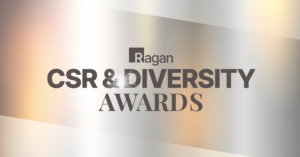4 ways comms pros can bolster and burnish internal DE&I efforts
A content strategist for WilmerHale shares guidance on crafting more inclusive messaging.

I’ve recently had many conversations with colleagues and peers about how to write about diversity, equity and inclusion (DE&I) in a firm’s internal communications. We know that generic values statements no longer do enough—our communities want to hear about the actions our leaders have taken to demonstrate these values.
As a white, mid-career woman (a robustly represented demographic across communications teams), I am always learning when I engage in the ever-shifting discussions about DE&I. But having focused a lot of time crafting internal messaging over the tumultuous past year, I have picked up a few valuable strategies.
1. First, listen.
When someone comes to me to promote a program or tell a story, I want to help quickly and efficiently. But working on internal DE&I content always reminds me to prioritize listening. People often need to share frustrations before they dive into a plan. And those frustrations help me do my job better—they help me know what my audience needs.
At my firm, the comms team is lucky to work with an engaged, full-time DE&I staff, who also help connect us with stakeholders from different backgrounds across the firm. These stakeholders help us understand what they need to hear in, say, a message from firm leadership about a particular current event. Of course, I never want to burden people with extra work just because they are part of an impacted group. But I’ve found that people usually appreciate the chance to share their insights and experience in a brief email exchange or phone call.
2. Be specific.
This rule holds true for any good content, but it has special resonance for DE&I programs.
Your audience has likely seen statement after statement that amounts to, “Yes, we are committed to diversity, equity and inclusion,” whether from your organization or from brands they follow elsewhere. Instead, tell them what exact initiatives are in place to foster inclusion and professional development—and what results those initiatives have achieved.
At my firm, despite an internally well-publicized audit of our DE&I programs a few years ago, we realized that we had not recently updated the firm community on our initiatives. So I wrote a comprehensive update for our internal website. This update described, for example, leadership committees that focus on DE&I, how they set goals for making the firm more inclusive, and specific progress they’d made toward these goals.
A big part of the writing process turned out to be finding information that already existed—many of the facts I wanted to share, such as demographics of firm employees and new hires, lived in business development and legal personnel materials. So I collaborated with other departments to gather that information, then wrote an article that would put it in front of our entire community and link it to their lives. For example, I included a count of how many external professional development opportunities the firm supports—e.g., conferences and bar association events—alongside feedback from our participating lawyers about the programs’ value.
One important caveat: Specifics on how diversity factors into work assignments or employee evaluations can’t always be shared for legal and privacy reasons, so check with legal personnel and DE&I teams before getting too detailed.
3. Don’t just write about diversity.
Internal communications at my firm often include profiles of our lawyers and staff, announcements of awards or professional milestones, and other content that ostensibly has nothing to do with DE&I. Except that it does—because by featuring a diverse group of people in all types of content, you’re reemphasizing the firm’s commitment to inclusion and advancement for everyone.
Since older generations of lawyers tend to skew white and male—and by virtue of where they are in their careers, they are often the people helming major matters and winning awards—I’ve found it important to seek out stories that spotlight people from traditionally underrepresented backgrounds.
My firm’s pro bono program has provided one source—because pro bono work often gives younger lawyers a chance to manage high-impact matters, it can give communications teams the chance to feature the successes of a younger, more diverse pool of people. Internships and fellowships do the same, and we profile everyone we can who completes one of the firm’s internal professional development programs.
4. Make sure your imagery tells the right story.
All your imagery—not just when it accompanies DE&I-related content—should feature diverse groups of people.
On my firm’s intranet, lawyer and staff headshots often accompany the stories we post. So it’s painfully obvious when we’re only writing about the achievements of white, male firm members, even to people who are just skimming the homepage and don’t read a word. Again, seek out opportunities to feature diverse groups of people. You can’t simply rely on the news that shows up in your inbox to provide those stories for you.
Katie Hunt is a content strategist focused on internal and external communications at WilmerHale. She lives in Los Angeles. Read more of her work at JD Supra.






